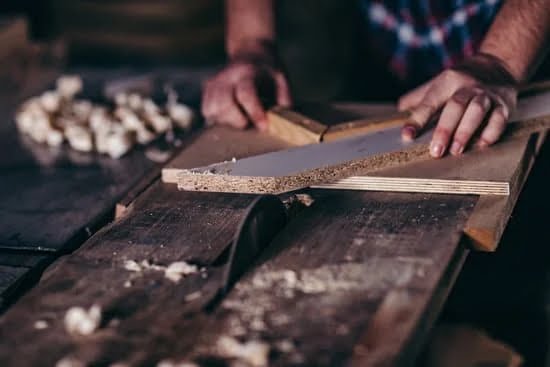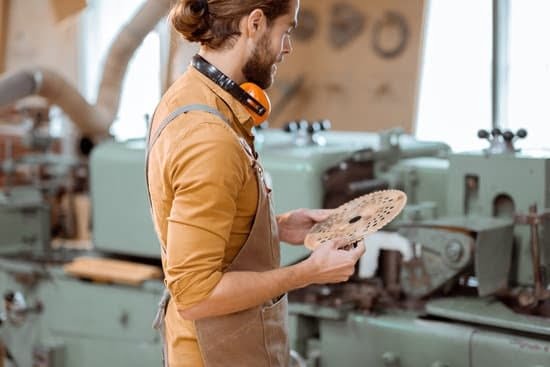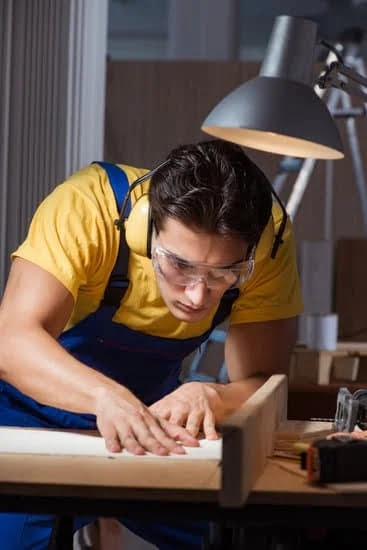Are you a woodworking enthusiast looking for innovative techniques to enhance your craft? If so, you may want to consider incorporating vacuum press woodworking into your repertoire. This technique offers a range of unique benefits that can greatly improve efficiency, quality, and design options in your woodworking projects.
Vacuum press woodworking is a method that utilizes atmospheric pressure to shape and bond materials together. By creating a vacuum or negative pressure environment, this technique allows for the precise molding of wood and other materials. It is commonly used in industries such as furniture making, cabinetry, and musical instrument manufacturing.
The history of vacuum press woodworking dates back several decades, with its origins rooted in the development of laminating technology. Over time, this technique has evolved and advanced, resulting in improved equipment and more efficient processes. Today, it has become an indispensable tool for craftsmen seeking unparalleled precision and versatility in their creations.
In the following sections of this article, we will delve deeper into the world of vacuum press woodworking. We will explore its history, understand how it works, highlight its advantages over alternative methods, provide real-life application examples, offer a step-by-step guide for beginners, share success stories from professionals in the industry, address frequently asked questions, and emphasize why embracing this innovative approach could revolutionize your woodworking endeavors.
So if you are intrigued by the concept of vacuum press woodworking or simply want to expand your knowledge on this subject matter – read on. Discover how this technique can take your craftsmanship to new heights and open up exciting possibilities for creativity and design.
Exploring the history of vacuum press woodworking
While vacuum press woodworking may seem like a relatively modern technique, its roots can be traced back several centuries. The use of atmospheric pressure to bend wood dates back to as early as the 17th century, with craftsmen employing steam and heat to make wood more malleable. However, it wasn’t until the development of vacuum technology in the mid-20th century that vacuum press woodworking truly began to take shape.
One significant milestone in the history of vacuum press woodworking was the invention of veneering machines in the early 1900s. These machines utilized hydraulic pressure to bond thin layers of wood together, allowing for greater flexibility and ease in creating complex shapes and designs. This laid the foundation for what would later become known as vacuum press woodworking.
The construction industry played a crucial role in furthering the development and adoption of vacuum press woodworking techniques. In the mid-20th century, architects began exploring new ways to create curved surfaces using wood, leading to advancements in adhesive technology and machinery specifically designed for vacuum pressing. As a result, curved wooden structures became more feasible and cost-effective to produce.
Despite its rich history, vacuum press woodworking has seen considerable evolution and refinement over time. Today, advancements in materials, adhesives, and machinery have made this technique more accessible than ever before. With computer-aided design software and precision engineering, craftsmen can achieve intricate shapes and patterns with greater accuracy and efficiency.
| Year | Milestone |
|---|---|
| 17th century | Craftsmen use steam and heat to bend wood. |
| Early 1900s | Invention of veneering machines utilizing hydraulic pressure. |
| Mid-20th century | Advancements in adhesive technology and machinery for vacuum pressing. |
| Present day | Advancements in materials, adhesives, and precision engineering. |
Understanding how vacuum press woodworking works
The Equipment Required
Vacuum press woodworking is a technique that requires specialized equipment to achieve optimal results. The primary component of this process is the vacuum press itself, which consists of a vacuum bag, an airtight seal, and a vacuum pump. The vacuum bag is typically made of durable materials such as silicone or polyurethane, and it is designed to provide a tight seal around the workpiece.
In addition to the vacuum press, other essential equipment includes a compressor for creating the necessary pressure and a vacuum controller for monitoring and adjusting the level of vacuum. Depending on the specific project, additional tools such as clamps, caul plates, and edge banding systems may also be required.
The Steps Involved
The process of vacuum press woodworking involves several steps to ensure proper adhesion and shaping of the workpiece. Here are the key steps involved:
- Preparation: Before starting, it is crucial to prepare the workpiece by sanding or planing its surfaces to remove any imperfections or roughness. This step ensures better contact between the workpiece and veneer or laminate.
- Applying adhesive: Next, apply an appropriate adhesive onto both surfaces that will be bonded together – usually the workpiece itself and a veneer or laminate sheet. It is important to choose an adhesive that is suitable for your specific project and follow the manufacturer’s instructions for application.
- Placing in the vacuum bag: Once adhesive has been applied, carefully place the workpiece into the vacuum bag with the adhesive-covered side facing up. Make sure that there are no wrinkles or folds in either the workpiece or veneer/laminate sheet before proceeding.
- Vacuum sealing: After placing everything in position, use clamps or caul plates to hold everything securely together within the bag. Then, attach the vacuum pump to extract all air from within the bag until a sufficient amount of pressure is applied. Monitor the vacuum controller to ensure the desired level of vacuum is maintained throughout the process.
- Curing time: It is important to allow sufficient curing time for the adhesive to bond properly. This can vary depending on the type of adhesive used, so refer to the manufacturer’s instructions for recommended curing times.
- Finishing touches: Once the bonding process is complete, carefully remove the workpiece from the vacuum bag. Trim any excess veneer or laminate, and perform any necessary finishing touches such as sanding or staining to achieve the desired final appearance.
By following these steps, both beginners and experienced woodworkers can achieve high-quality results with vacuum press woodworking techniques.
The advantages of using vacuum press woodworking
Increased Efficiency
One of the major advantages of using vacuum press woodworking is the increased efficiency it offers. Traditional woodworking techniques often require a significant amount of time and effort to achieve desired results. With vacuum press woodworking, however, the process is streamlined and much quicker.
The use of vacuum pressure allows for faster glue drying times, reducing the overall production time. Additionally, the efficient distribution of pressure across the entire surface eliminates the need for clamps or other cumbersome holding devices. This means that craftsmen can move on to their next project sooner and increase their overall productivity.
Improved Quality
Another benefit of vacuum press woodworking is the improved quality of the finished product. The even distribution of pressure during the process ensures that every corner and curve is tightly bonded, resulting in stronger joints and better overall structural integrity.
Moreover, using vacuum pressure eliminates potential air bubbles or voids between layers of wood or between wood and other materials like veneers. This leads to a smoother finish with minimal imperfections.
Furthermore, because vacuum presses exert consistent and uniform pressure over an extended period, they allow for proper curing and adhesion without distortion. This results in a higher quality final product with fewer warping or bending issues.
Enhanced Design Options
Vacuum press woodworking also provides artisans with enhanced design options when compared to traditional woodworking methods. The use of vacuum pressure allows for unique shapes, curves, and bends that may be difficult or impossible to achieve through other means.
Vacuum forms can be custom-made to fit specific shapes, enabling woodworkers to create intricate pieces with precise dimensions. This technique opens up possibilities for more artistic expressions in furniture making, cabinetry construction, and other applications where design creativity is valued.
Additionally, since vacuum press woodworking can apply even pressure over large surfaces without distorting the material being used, it enables the use of exotic veneers or delicate materials that were previously challenging to work with. This gives designers the ability to experiment with various materials and create visually stunning pieces.
By utilizing vacuum press woodworking techniques, craftsmen can benefit from increased efficiency, improved quality, and enhanced design options. These advantages make this innovative approach an attractive choice for both professionals and amateurs in the woodworking industry.
Real-life applications of vacuum press woodworking
Vacuum press woodworking has found widespread use in various industries due to its versatility and ability to produce high-quality products. One of the primary areas where this technique is commonly utilized is in the field of furniture making. The use of vacuum press allows for the creation of intricate designs and shapes that would be difficult or impossible to achieve with traditional woodworking methods.
This technique also ensures a consistent pressure distribution across the entire surface, resulting in a smooth and seamless finish. Moreover, vacuum press woodworking allows for efficient production by reducing assembly time, minimizing waste materials, and improving overall accuracy.
Cabinetry is another industry that greatly benefits from vacuum press woodworking. With this technique, craftsmen can easily create custom-made cabinets with curved or contoured surfaces. By using flexible veneers or laminates along with the application of vacuum pressure, cabinetry manufacturers achieve precise and durable results. This method not only enhances the aesthetic appeal but also increases the longevity and functionality of cabinets.
Musical instrument manufacturing is yet another field where vacuum press woodworking shines. The ability to laminate thin layers of wood together under controlled pressure allows for the construction of strong and resonant instrument components such as guitar tops, backs, sides, and soundboards. Vacuum pressing ensures an even distribution of glue while eliminating air pockets or bubbles between layers, resulting in enhanced tonal qualities and structural integrity.
| Industry | Applications |
|---|---|
| Furniture Making | – Creation of intricate designs and shapes – Consistent pressure distribution for smooth finish. – Efficient production through reduced assembly time and minimized waste materials. – Improved accuracy |
| Cabinetry | – Custom-made cabinets with curved or contoured surfaces – Precise and durable results. – Enhanced aesthetic appeal, longevity, and functionality |
| Musical Instrument Manufacturing | – Strong and resonant instrument components such as guitar tops, backs, sides, and soundboards – Controlled pressure ensures even glue distribution without air pockets or bubbles. – Enhanced tonal qualities and structural integrity |
A step-by-step guide to vacuum press woodworking
Vacuum press woodworking is a versatile and efficient technique that offers numerous benefits to woodworkers. Whether you are a beginner or an experienced craftsman, following a step-by-step guide can help you get started with this innovative approach. This section will provide a comprehensive overview of the process, including essential tips, tricks, and safety considerations.
Step 1: Acquiring the necessary equipment
To begin with vacuum press woodworking, you will need the following equipment:
– Vacuum bag or membrane: This is a specially designed bag or membrane that creates an airtight seal around the workpiece during the pressing process.
– Vacuum pump: A vacuum pump is responsible for creating suction and maintaining the desired level of pressure inside the vacuum bag.
– Vacuum press frame or table: This provides support for the workpiece and ensures even pressure distribution throughout the pressing process.
Step 2: Preparing the workpiece
Before placing your workpiece into the vacuum bag, it is important to prepare it properly:
– Planing and sanding: Ensure that your workpiece is flat, smooth, and free from any imperfections.
– Applying glue or adhesive: If required, apply glue or adhesive to join multiple pieces together. Make sure to use an appropriate adhesive for your specific woodworking project.
– Positioning your workpiece: Place your workpiece in the desired position on top of your chosen substrate material.
Step 3: Sealing the vacuum bag
Once your workpiece is ready, follow these steps to seal it inside the vacuum bag:
– Place your workpiece on top of its intended substrate material within the vacuum bag.
– Carefully fold over and overlap the vacuum bag openings to create a double-folded edge.
– Use clamps or other fasteners to secure and seal all edges of the folded vacuum bag.
Step 4: Applying vacuum pressure
Now that your workpiece is sealed inside the vacuum bag, it’s time to apply the necessary vacuum pressure:
– Connect your vacuum pump to the vacuum bag using a suitable hose or tubing.
– Turn on the vacuum pump and allow it to create suction within the bag. Monitor the pressure gauge to ensure that it reaches the desired level.
– Maintain the desired level of pressure for the recommended duration based on your specific woodworking project.
Step 5: Releasing the pressure and removing the workpiece
Once your workpiece has been pressed for the required duration, follow these steps to release the pressure and remove it from the vacuum bag:
– Turn off and disconnect the vacuum pump from the bag.
– Carefully unclamp or remove any fasteners securing the edges of the vacuum bag.
– Gently pull apart and open up the vacuum bag to release your pressed workpiece.
By following these steps and considering essential tips, tricks, and safety considerations, you can successfully achieve high-quality results with vacuum press woodworking. It is important to familiarize yourself with proper safety procedures when working with equipment such as a vacuum pump and ensuring that all components are in good working condition before starting a project. With practice, you will gain confidence in this technique and unlock its full potential for various woodworking projects.
Comparing vacuum press woodworking to alternative methods
When it comes to woodworking, there are various methods and techniques that woodworkers can employ. However, one method that stands out as a superior choice is vacuum press woodworking. This technique offers several advantages over alternative methods, making it a popular choice among craftsmen and manufacturers. Below, we will explore alternative methods of woodworking and explain why vacuum press woodworking is the preferred option.
1. Traditional clamping: One common method of woodworking involves using clamps to hold pieces of wood together until the glue dries. While this method has been used for centuries and can produce successful results, it has its limitations.
Traditional clamping requires manual strength and precision, which can be time-consuming and physically demanding. In contrast, vacuum press woodworking utilizes atmospheric pressure to evenly distribute pressure across the entire surface of the workpiece, resulting in a stronger bond and reducing the risk of uneven glue spread or misalignment.
2. Heat-based methods: Another alternative technique is heat-based methods such as steam bending or hot pipe bending. These methods are often used to shape wood into desired forms by applying heat and moisture to make it pliable before bending it into shape.
While effective for certain applications, heat-based methods can be limited in terms of design options and can potentially damage delicate wood species. Vacuum press woodworking allows for complex shapes without exposing the wood to excessive heat or moisture, preserving its integrity while providing diverse design possibilities.
3. Mechanical fastening: Some woodworkers opt for mechanical fastening techniques such as screws or nails to join pieces together. While this method may be suitable for certain applications, it often leaves visible marks on the surface of the wood and may weaken its structural integrity over time due to expansion and contraction issues.
Vacuum press woodworking eliminates the need for mechanical fasteners by relying on adhesive bonding instead. This not only creates a cleaner finished product but also distributes pressure more evenly throughout the piece, resulting in a stronger and longer-lasting bond.
Overall, vacuum press woodworking offers numerous advantages over alternative methods. It provides increased efficiency, improved quality, and enhanced design options. By utilizing atmospheric pressure and adhesive bonding, this technique ensures stronger bonds, eliminates the need for visible fasteners, and allows for a wider range of creative possibilities. Woodworkers and manufacturers looking to achieve superior results in their projects should consider incorporating vacuum press woodworking into their practices.
Success stories and testimonials from professionals in the woodworking industry
Many professionals in the woodworking industry are experiencing great success and satisfaction with the integration of vacuum press woodworking techniques into their practices. These success stories highlight the unique benefits and advantages that come with using this innovative approach.
One such success story comes from a furniture maker who was struggling with achieving consistent quality in their pieces. By incorporating vacuum press woodworking, they were able to achieve precise and even clamping pressure on their veneers, resulting in flawless finishes and increased customer satisfaction. They were also able to experiment with different design options, adding more creativity and uniqueness to their furniture pieces.
Another testimonial comes from a cabinet maker who found that vacuum press woodworking greatly improved their efficiency in production. With traditional methods, they would often spend hours manually clamping veneers onto panels, causing delays in their overall production timeline. However, by utilizing vacuum press techniques, they were able to significantly reduce clamping time while ensuring uniform pressure distribution across all surfaces. This allowed them to complete projects faster without compromising on quality.
Musical instrument manufacturers also have had positive experiences with vacuum press woodworking. One manufacturer shared that by using this technique, they were able to create instruments with better tonal qualities due to the accurate gluing process enabled by the vacuum press. They also mentioned that it allowed them more design flexibility as they could easily bend wood components into desired shapes without causing damage or warping.
These success stories highlight just a few of the many benefits of vacuum press woodworking in various sectors of the industry. It is clear that integrating this technique can lead to improved efficiency, enhanced product quality, and expanded design possibilities for professionals working in the field.
Frequently asked questions about vacuum press woodworking
As with any woodworking technique, vacuum press woodworking may raise some questions for those who are new to the practice or are simply curious about its application and benefits. In this section, we will address some frequently asked questions and concerns to help provide a better understanding of vacuum press woodworking.
- Is vacuum press woodworking suitable for beginners?
- What types of wood can be used with vacuum press woodworking?
- Can I use my existing woodworking tools with vacuum press woodworking?
- Are there any safety considerations specific to vacuum press woodworking?
Vacuum press woodworking can be enjoyed by woodworkers of all skill levels. While it does require an investment in equipment and materials, it is relatively straightforward to set up and use. Beginners can start with smaller projects before gradually moving on to more complex pieces as they gain experience and confidence in working with the vacuum press.
One of the advantages of vacuum press woodworking is its ability to work with a wide range of wood species. Whether you’re working with hardwoods like oak or maple, softwoods like pine or cedar, or even exotic woods, the vacuum pressure ensures a secure bond between the wood veneer and substrate material.
Yes, you can use many standard woodworking tools in conjunction with vacuum pressing techniques. Tools such as routers, saws, chisels, and hand planes are still valuable assets in the workshop for shaping, trimming, and finishing your projects. The vacuum press is primarily used for creating strong adhesive bonds between materials rather than replacing traditional woodworking techniques.
While vacuum press woodworking does not pose unique safety risks compared to other forms of woodworking, it is always important to follow general safety guidelines. This includes wearing appropriate protective gear such as gloves and safety glasses when using sharp tools or handling adhesives and chemicals. Additionally, proper ventilation should be maintained in the workshop when working with adhesives to minimize exposure to harmful fumes.
By addressing these frequently asked questions, we hope to provide clarity for beginners and those interested in vacuum press woodworking. It is always recommended to thoroughly research and familiarize yourself with the technique before embarking on any new woodworking project.
Conclusion
In conclusion, vacuum press woodworking is a significant technique that has revolutionized the woodworking industry. With its origins traced back in history and its evolution over time, this method has proven to be highly beneficial in various aspects of woodworking. By understanding how vacuum press woodworking works and the equipment involved, craftsmen can take advantage of increased efficiency, improved quality, and enhanced design options.
The real-life applications of vacuum press woodworking further demonstrate its versatility and usefulness. From furniture making to cabinetry and musical instrument manufacturing, this technique has found success in multiple industries. Its ability to create precise bends and shapes with minimal effort makes it a go-to choice for many professionals.
For those interested in trying vacuum press woodworking, a step-by-step guide provides essential tips and safety considerations to ensure successful implementation. Comparisons to alternative methods clearly show the superiority of vacuum press in terms of efficiency and results.
The success stories and testimonials shared by professionals in the industry serve as proof of the effectiveness of vacuum press woodworking. Their firsthand experiences highlight the positive impact on productivity and product quality.
In conclusion, vacuum press woodworking has emerged as an innovative approach within the woodworking industry. Its benefits are undeniable, leading to increased efficiency, improved quality, and more design possibilities. Therefore, it is highly recommended for readers to explore and embrace this technique as it continues to shape the future of woodworking.

Hi everyone! I’m a woodworker and blogger, and this is my woodworking blog. In my blog, I share tips and tricks for woodworkers of all skill levels, as well as project ideas that you can try yourself.





